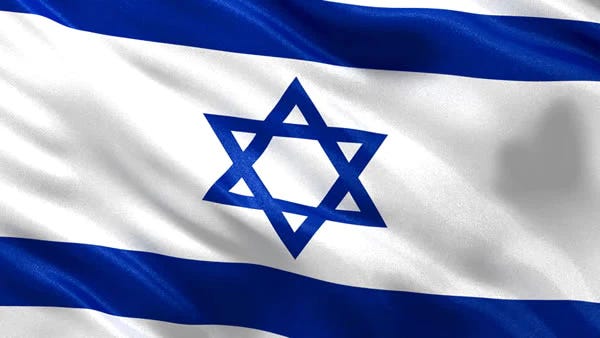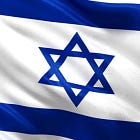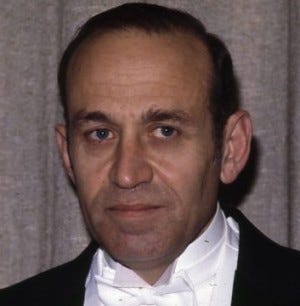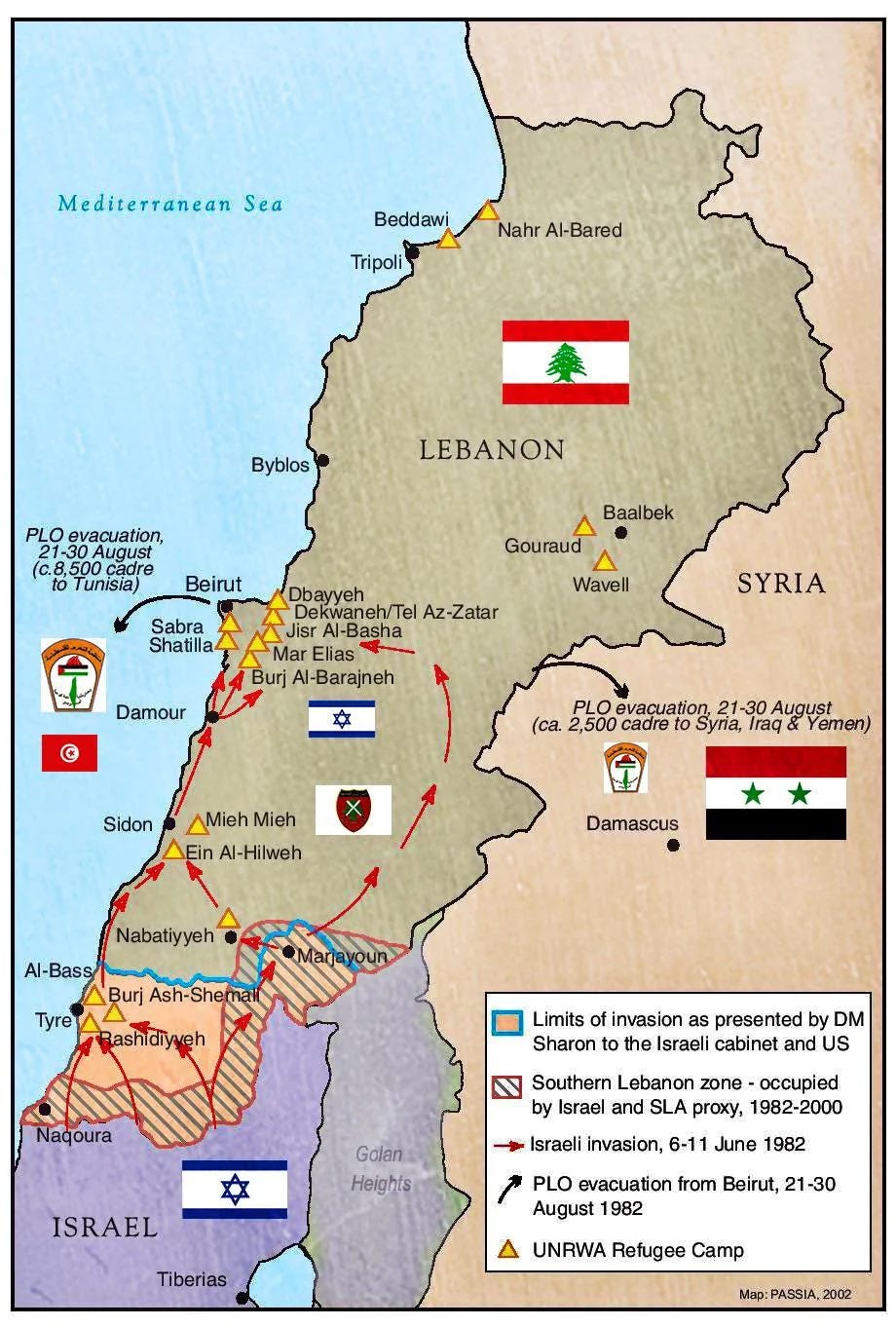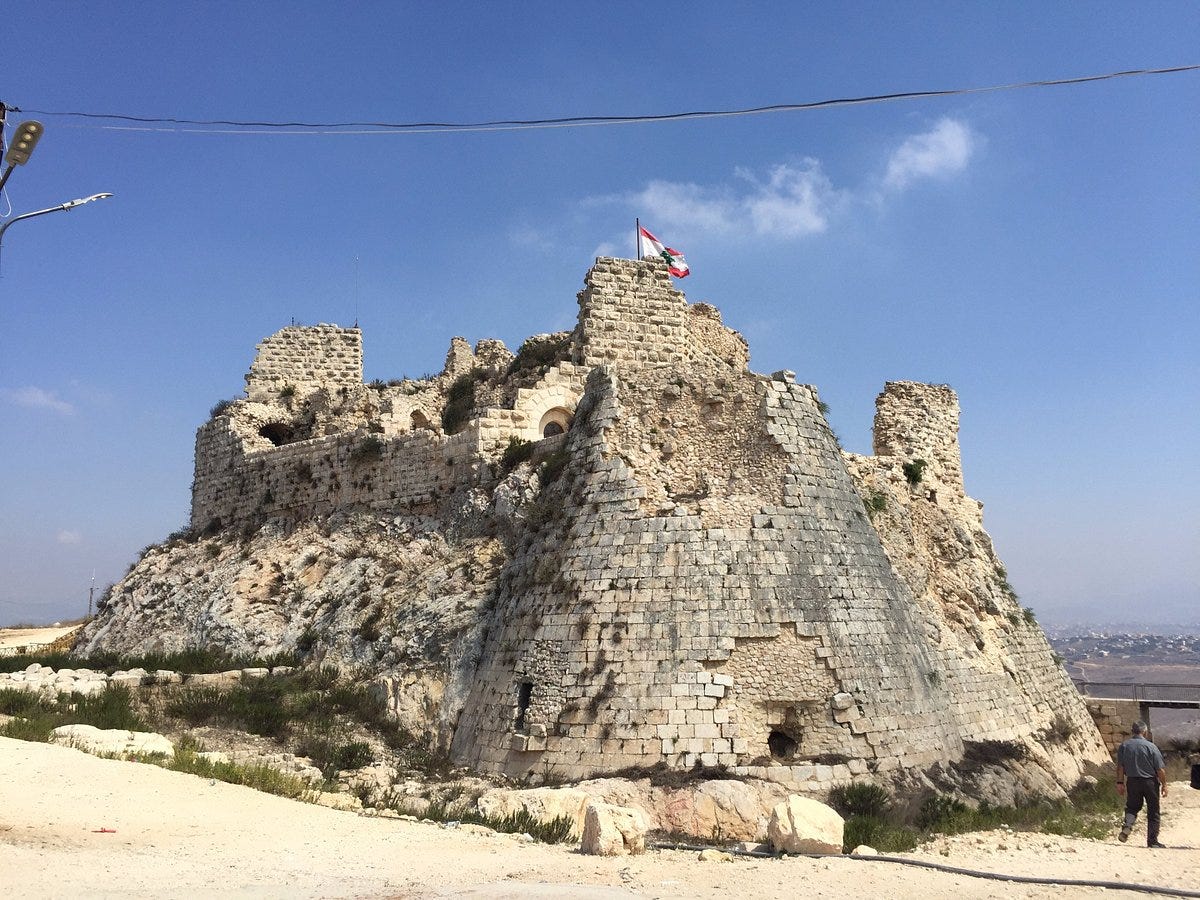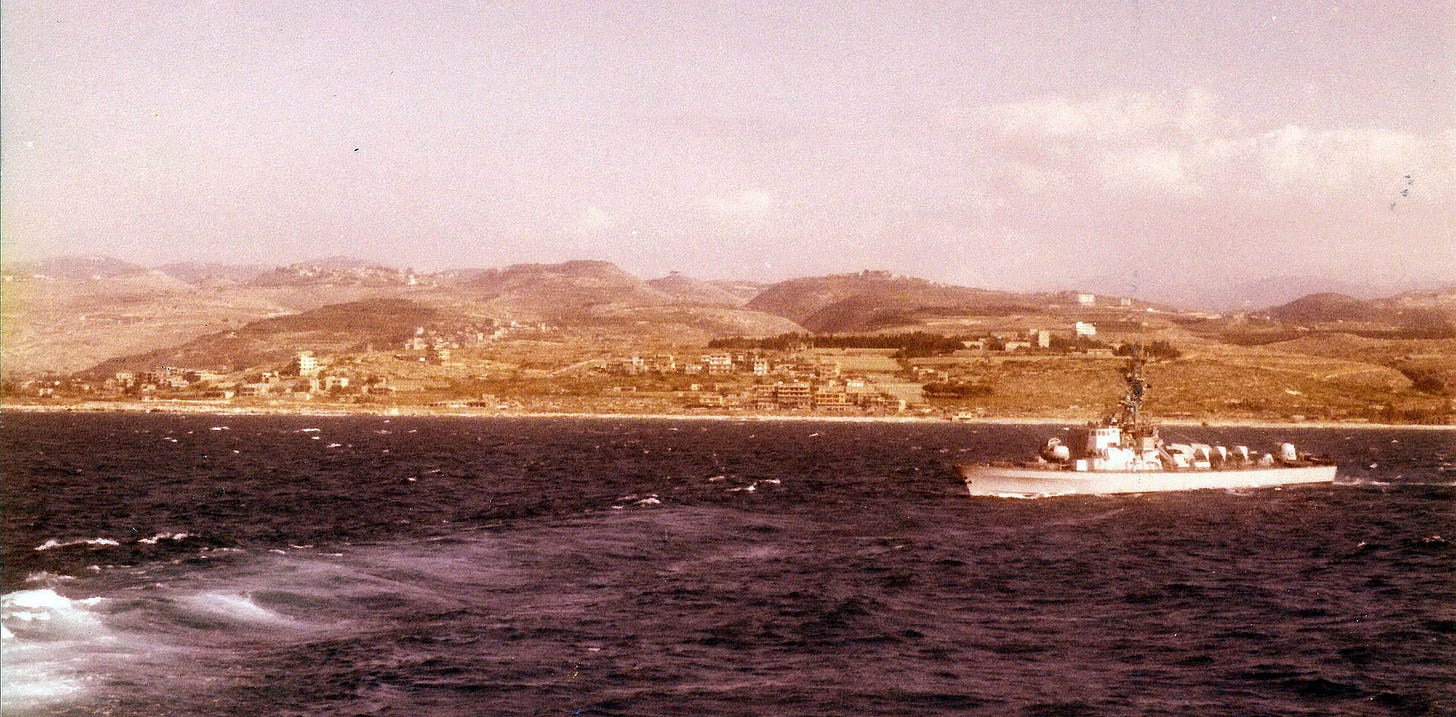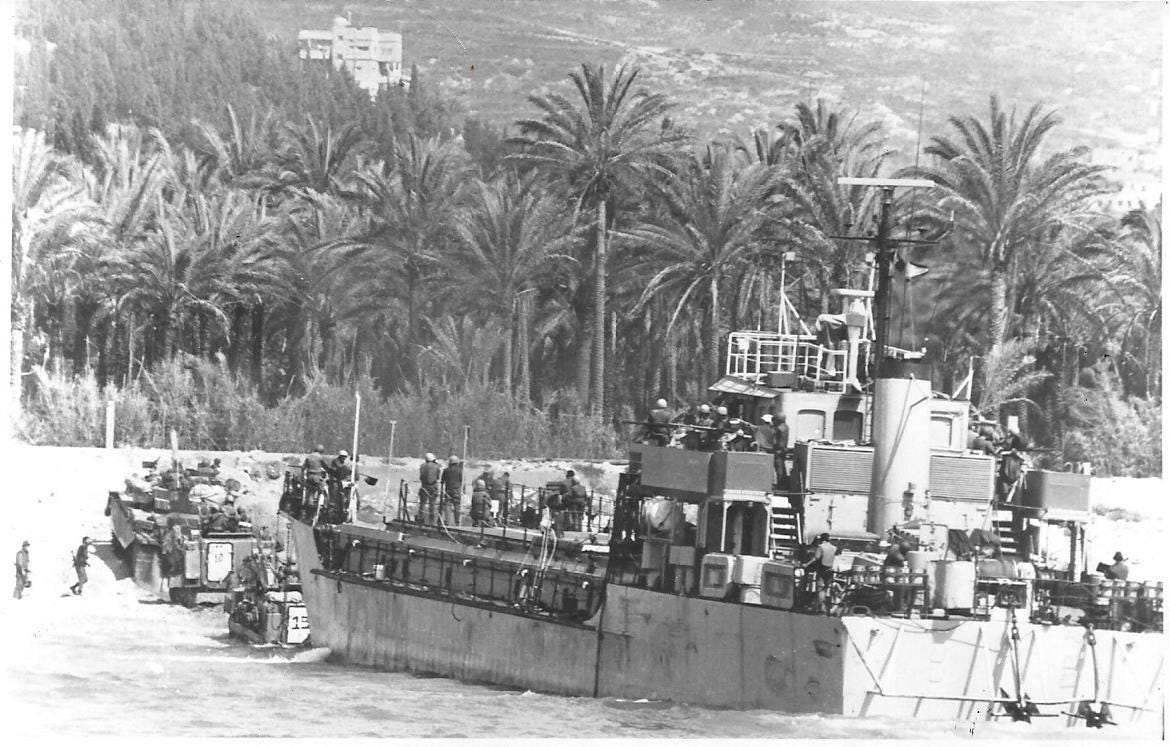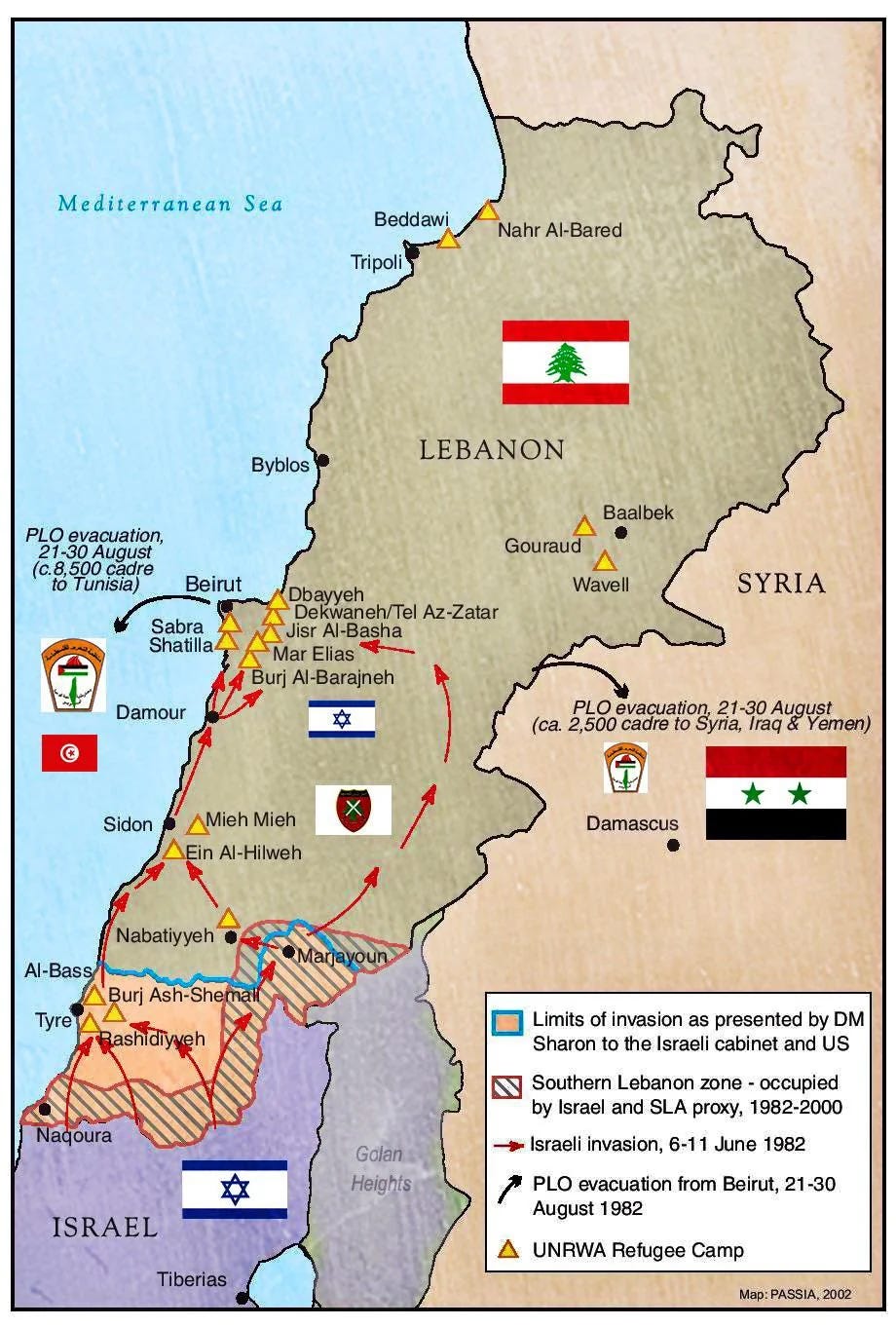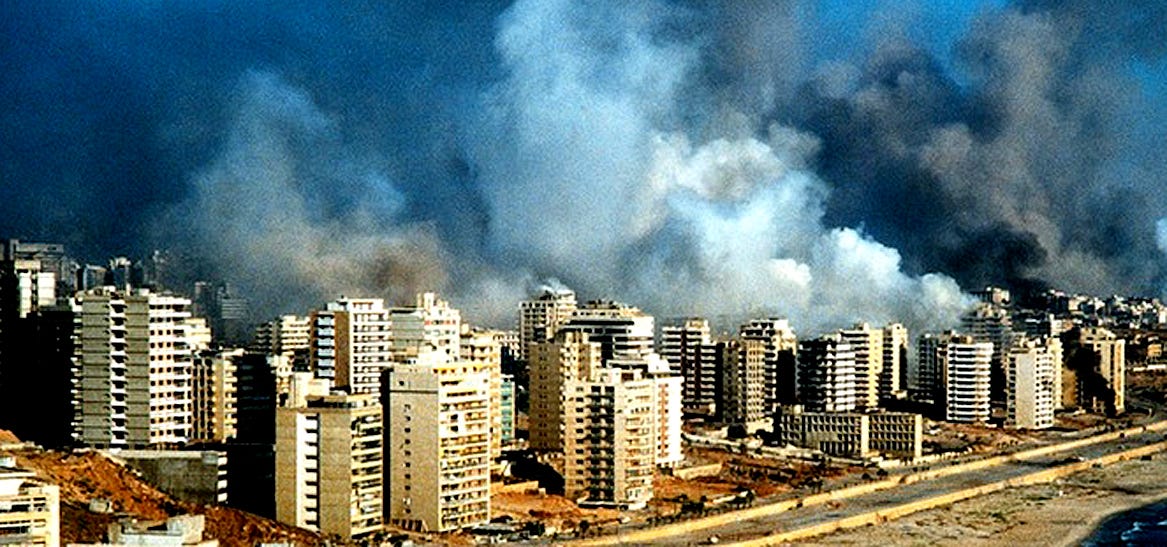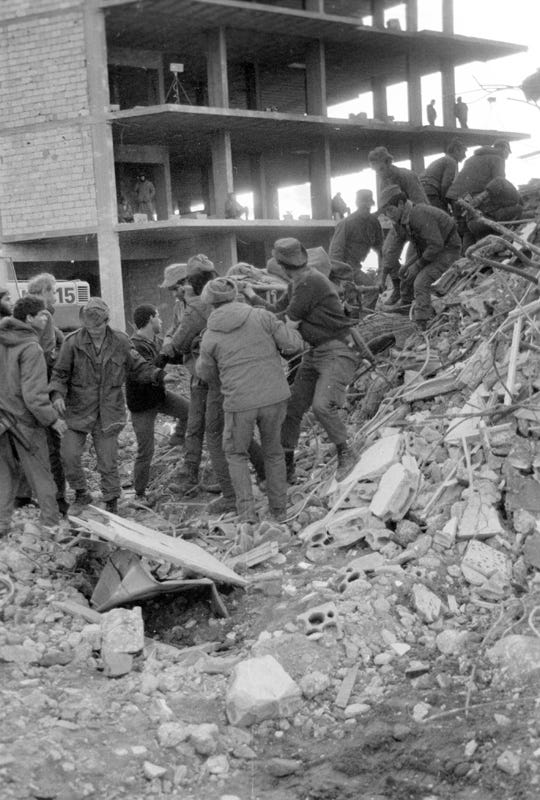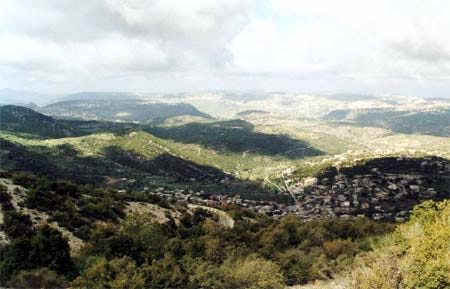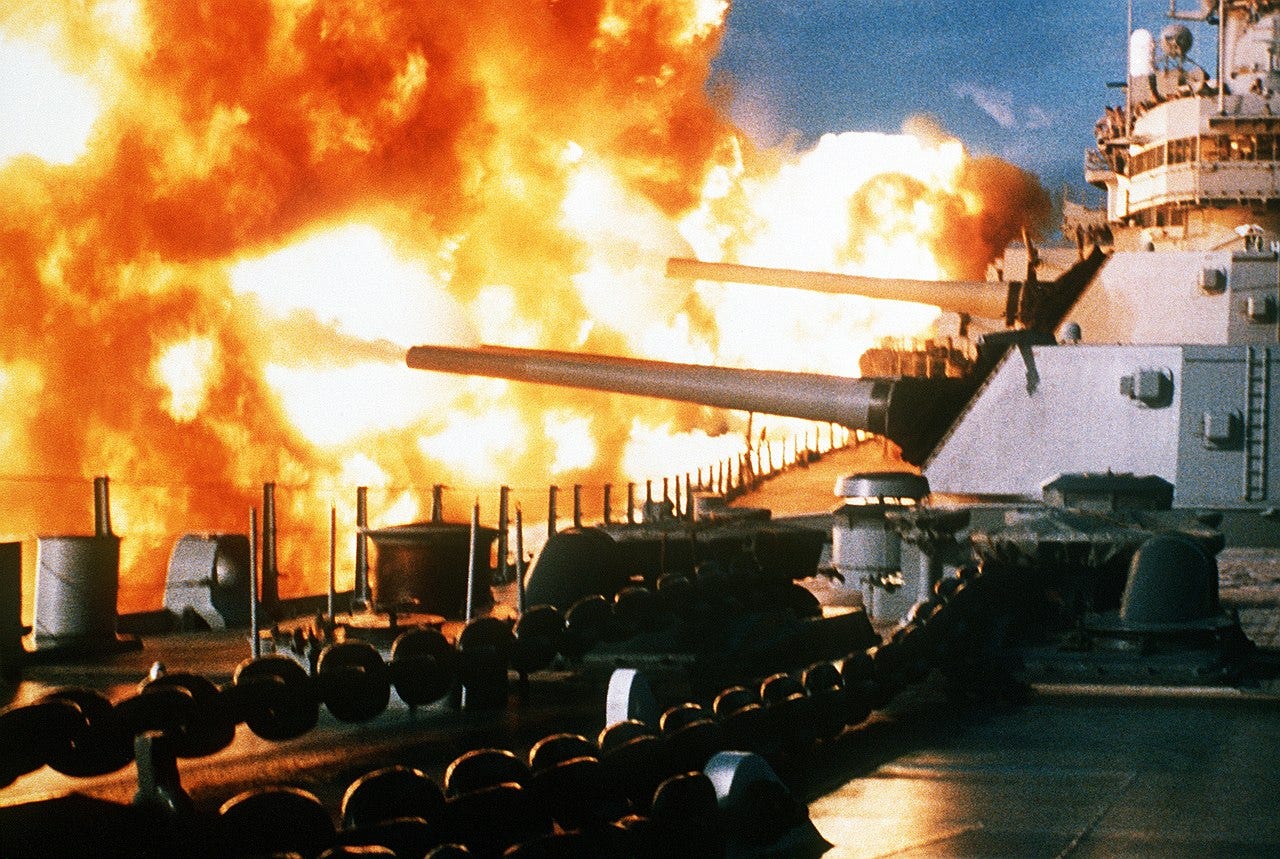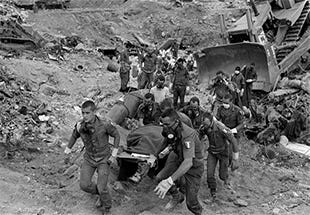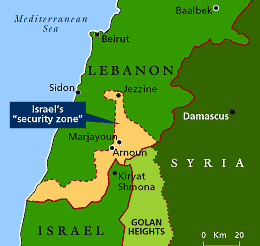In my last post I started the long process of setting up the 1982 Israeli invasion of Lebanon. Click below if you missed it.
Today we will look at the invasion and early occupation, including some incidents that are not necessarily Israeli but occurred because of the instability in Lebanon.
On June 3 1982, the Abu Nidal Organization, a splinter group of Fatah, attempted to assassinate Israeli ambassador Shlomo Argov in London. Israel immediately launched airstrikes against PLO and PFLP targets in West Beirut. The PLO responded by launching Katusha rockets and shelling Israeli villages in the north, both the airstrikes and the rocket attacks constituted a clear violation of the ceasefire. Meanwhile, on June 5, the Security Council unanimously passed Resolution 508 calling for "all the parties to the conflict to cease immediately and simultaneously all military activities within Lebanon and across the Lebanese-Israeli border and no later than 0600 hours local time on Sunday, June 6 1982".
When the Israeli cabinet met to discuss their response to the UN resolution. Defense Minister Ariel Sharon offered up a plan to invade Lebanon instead. It was a plan he had been working on for some time and he called it Operation Peace for Galilee. Sharon described it as a plan to advance 25 miles into Lebanon, demolish PLO strongholds, and establish an expanded security zone that would put northern Israel out of range of PLO rockets. In fact he was asked multiple time by Prime Ministered Menachem Began if the goal of the operation was to capture Beruit and Sharon assured him it was not, it was a limited operation to expand the Security Zone to remove the threat of PLO rocket and artillery attacks on Northern Israel. After the operation was given the go-ahead by the cabinet, Sharon and Chief of Staff Rafael Eitan informed the operational commanders to head straight for Beirut.
On June 6, 1982, Israeli forces crossed the border into Lebanon and quickly drove 25 miles into Lebanon, moving into East Beirut with the tacit support of Maronite leaders. At the same time the UN Security Council passed another resolution, demanding that Israel withdraw to the internationally recognized borders of Lebanon, the resolution was vetoed by the US. Meanwhile, the United States called for PLO to withdraw from Lebanon and Yasir Arafat attempted through negotiations to salvage what was clearly a disaster for the PLO.
Israeli forces had launched a three-pronged invasion of southern Lebanon. Roughly 60,000 troops and more than 800 tanks, heavily supported by aircraft, attack helicopters, artillery, and missile boats, crossed the Israel–Lebanon border in three areas. Simultaneously, Israeli armor, paratroopers, and naval commandos in amphibious landing ships, left Ashdod for the Lebanese coast north of Sidon. The westernmost Israeli force was to advance up the coastal road bypassing Tyre and destroying three PLO camps in the area, then move up the coast towards Sidon and Damour, while simultaneously conducting an amphibious landing north of Sidon to cut off the retreat of PLO forces there. In the center, two divisions were to advance both north and south of Beaufort Castle, and take the road junction at Nabatieh, while an reconnaissance battalion was to take the castle itself. The two divisions were then to split, with one heading west to link up with the forces along the coast, and another towards Jezzine and from there along the right flank of Syrian forces in the Bekaa Valley. The easternmost Israeli force, the largest of the three, advanced into the Bekaa Valley. Its mission was to prevent Syrian reinforcements and to stop Syrian interference with the operation on the coastal road.
The advance along the coastal road was preceded by heavy artillery bombardment and airstrikes, but quickly became bogged down and was soon behind schedule. The narrowness of the road forced a slow advance, and Israeli armor became stuck in a large traffic jam. Several armored vehicles were knocked out by PLO fighters with anti-tank weaponry hiding in three groves along the road. One of the lead battalions, which was supposed to bypass Tyre and establish a blocking position to the north of the city, made a wrong turn and found itself in the center of the city, where it was ambushed. At eight in the evening the force finally crossed the Litani river and headed towards Sidon. In the central sector, the mission went as planned, the two Israeli divisions bypassed Beaufort Castle, although an order to postpone the capture of Beaufort Castle did not reach Israeli forces in time to prevent the operation, and the Golani Brigade captured the castle in a fiercely-fought battle.
The road junction at Nabatieh was also secured by the end of the first day. Meanwhile, the easternmost force penetrated into the Bekaa Valley and bore down on the Syrian positions. One division bypassed Mount Hermon via a road bulldozed by Israeli military engineers and cleared the town of Hasbaiya before swinging right and advancing towards Rachaiya. Though Israeli forces halted in the floor of the valley, they were flanking Syrian forces from the east and west. The Syrians put up minimal resistance and conducted some harassing artillery fire but by the end of the first day, the operation had gone almost entirely according to plan, although the advance along the coastal road was still behind schedule.
Despite the delays, the Israeli advance along the coastal road continued steadily. This advance was supported by heavy air attacks against PLO positions and Israeli missile boats which destroyed targets along the coast. Israeli armor continued advancing towards Sidon, while Israeli infantry attacked three Palestinian refugee camps in the area. The camps; Rashidiya, Burj ash-Shamali, and al-Bass, were crisscrossed with networks of bunkers, trenches, and firing positions. The Israelis took each camp section by section using the same method: warnings were blared by loudspeaker urging civilians to leave, before air and artillery bombardment commenced, followed by an infantry assault. Israeli infantry had to engage in fierce urban combat in narrow streets. The PLO defenders put up strong resistance and sometimes used civilians as human shields. It took four days of combat to secure Rashidiya and three days to secure the other two camps. At the same time, an Israeli amphibious operation was conducted north of Sidon, beginning with a diversionary bombardment of targets away from the landing zone by missile boats and aircraft. Two groups of commandos from Shayetet 13 naval commando unit came in next. One group swam to the mouth of the Awali River and disabled mines that would have devastated the landing force. The other group came ashore in rubber dinghies and probed the defenses and destroyed beach obstacles. After a brief firefight with a small PLO force, the main landings began, with paratroopers coming ashore in rubber dinghies to establish a beachhead followed by three landing craft in each landing zone. They unloaded troops and armor. Over the following days, the three landing ships would run between Israel and Lebanon, shuttling more troops and armor onto the beachhead.
The PLO response was limited to ineffective mortar fire, which was met with Israeli missile boats and aircraft strikes. By the end of the landings, the IDF had put 2,400 soldiers and 400 tanks and APCs ashore. From the beach, these forces advanced on Sidon, supported by gunfire from missile boats. At the same time, Israeli forces in the central sector advanced towards Jezzine. The eastern sector units remained in place and began setting up heavy artillery positions that put Syrian SAM units in artillery range.
Meanwhile, Israeli forces advancing along the coastal road reached the outskirts of Sidon, but were delayed by heavy resistance in the main streets and the Ain al-Hilweh refugee camp on the southeastern edge of the city. The paratroopers attempted to capture the city center and secure the south–north route through the city, but failed. The decision was made to bypass the city via a detour through the hills to the east. After linking up with the forces that had landed north of Sidon, another force of paratroopers and armor with heavy air and artillery support advanced through central Sidon and cleared a south–north route through the city in fierce fighting. Another Israeli division passed through the city to link up with the forces north of Sidon.
In the center, Israeli forces bypassed Jezzine to advance towards towards the main highway, leaving a blocking force in the area. The blocking force was attacked by the Syrian forces holding the town. Two tank battalions supported by a reconnaissance company and engineering platoon took Jezzine in a fierce day long battle against a Syrian battalion, then repulsed a fierce counterattack by dozens of Syrian commandos during the night, in combat that lasted until dawn. Meanwhile, Israeli forces continued to advance along the Syrians' right flank. Israeli forces advancing along the coast also completed the capture of Sidon. Paratroopers attacked the Kasbah while a combined force of Golani Brigade infantry and tanks attacked Ain al-Hilweh. The Kasbah was secured in three days, with the paratroopers advancing cautiously and securing it without suffering any casualties. However, the fighting at Ain al-Hilweh was some of the fiercest of the entire war. The camp was heavily fortified and defended by PLO fighters. The defenders fought fiercely over every alley and house, with civilians who wanted to surrender shot by the PLO. The Israeli advance was slow and was supported by massive air and artillery bombardment. The IDF employed its previous tactics of urging civilians to leave with loudspeakers before attacking an area. It took about eight days for the camp to fall, with the battle culminating in a last stand by the defenders at the camp mosque, which was blown up by the IDF.
On June 9, in an effort to establish air superiority and greater freedom of action, the Israeli Air Force launched Operation Mole Cricket 19. During the course of the operation, the Israeli Air Force scored a dramatic victory over the Syrians, shooting down 29 Syrian planes and also destroying 17 anti-aircraft missile batteries. Later that night, an Israeli air attack destroyed a Syrian armored brigade moving south from Baalbek. The IAF attacked and destroyed six more Syrian SAM batteries the following day. The easternmost Israeli force, which had been stationary, resumed its advance forward up the Bekaa Valley.
In the center, as Israeli forces approached Ain Zhalta, they were ambushed by Syrian's firing from superior positions. The Israelis were bogged down, and were reinforced by an infantry battalion lifted in by helicopter. The town was captured after a two-day battle that cost the Israelis 4 tanks and eleven soldiers and the Syrians 100 soldiers and 35 tanks. After Ain Zhalta fell, the Israelis advanced to Ain Dara, overlooking the Beirut-Damascus highway. The Israelis captured the heights overlooking the town, but found themselves bogged down as the Syrians took advantage of the terrain. The Israelis called in air support, and Israeli attack helicopters took advantage of ravines to fly in low, and gain the element of surprise. This proved particularly effective against Syrian tanks. After a day long battle, the Israelis had surrounded Ain Dara and were in a position to strike the highway.
On June 10 1982, an IAF F-4 Phantom mistook a column of troops from of 933rd Brigade for a Syrian commando unit. The F-4 attacked the column which was travelling in mostly open-air vehicles. The unit suffered 24 fatalities and 108 wounded.
In the east, Israeli forces advanced along four main routes towards Joub Jannine, along both sides of the Qaraoun reservoir. The Syrians resisted fiercely and infantrymen armed with anti-tank weapons staged ambushes against Israeli tanks. Syrian Gazelle helicopters armed with HOT anti-tank missiles proved effective against Israeli armor. However, the Israelis managed to capture the valley floor, and the Syrians retreated. The Israelis captured Rachaiya, advanced through Kfar Quoq, and took the outskirts of Yanta as well as Joub Jannine. The extent of Israeli advances ensured that Syrian reinforcements were blocked from deploying west of the Qaraoun reservoir. An Israeli armored battalion which had probed past Joub Jannine to the town of Sultan Yacoub, was ambushed by Syrian forces lying in wait. In the Battle of Sultan Yacoub, the Israelis fought fiercely to extricate themselves, and called in reinforcements, artillery fire and air support to cover the withdrawal. The IAF clashed with the Syrian Air Force over Sultan Yacoub, and managed to shoot down 25 jets and four helicopters. After six hours, the Israelis managed to retreat, having lost ten tanks and three armored personnel carriers.
To the west, as IDF troops mopped up remaining resistance in Tyre and Sidon and the Israeli advance on Beirut continued, Syrian tank and infantry units were deployed south of Beirut to reinforce the PLO. When the Israelis reached the Beirut suburb of Kafr Sill, they met a joint Syrian-PLO force for the first time, and fought a difficult battle to take it.
On June 11, Israel and Syria announced that they had agreed to a cease-fire. It would begin at noon, but would not include the PLO. Just before the cease-fire was to take effect, the Syrians moved a column of T-72 tanks in order to position them against the Israeli forces in the valley. Israeli infantry teams armed with TOW anti-tank missiles ambushed the Syrian column, destroying eleven tanks and the IAF shot down another 18 Syrian aircraft.
The ring around Beirut was closed by June 13 1982, seven days after the invasion. PLO and Syrian forces were isolated in the city. Israel hoped to end the siege as soon as possible; their goal all along had been for a quick and decisive victory. In addition, the US was pushing for peace through their representative Philip Habib. Sharon and Eitan knew that the longer the siege lasted, the stronger Yasir Arafat's bargaining position would be.
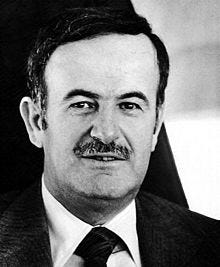
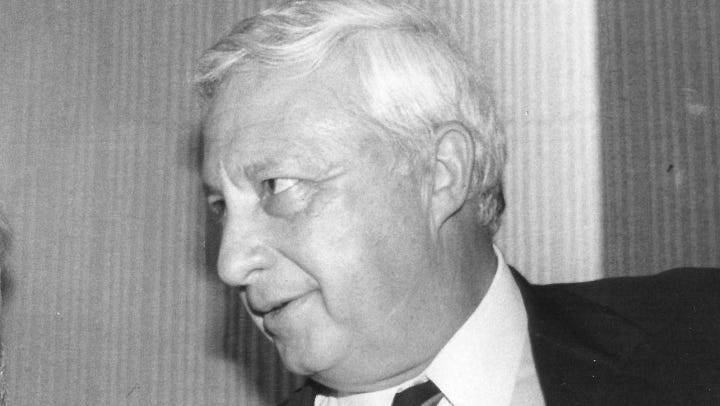
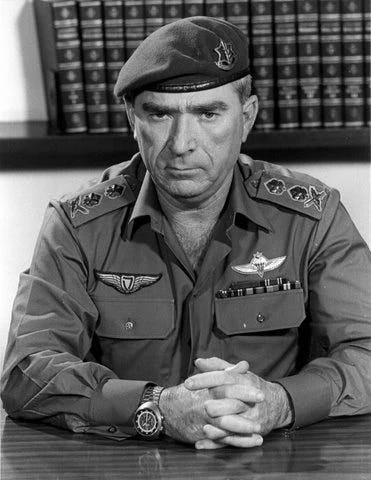
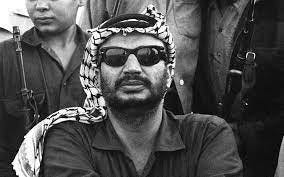
At first Israelis thought that the myriad Maronite militias in would destroy the PLO quasi-government in Beirut. It turned out that the Maronites were not up to the task and the thought of the IDF operating inside Beirut was less than ideal. It would involve street-to-street fighting and an unacceptable level of casualties. Instead they decided to use a combination of military pressure and psychological warfare to persuade the PLO that they only had two choices; surrender or total annihilation.
In the western zone the Israeli advance on Beirut continued forward, reaching Khalda on June 11. Six miles south of Beirut, the town was the last PLO position between the Israelis and the Beirut Airport. The PLO fighters fought a rearguard action which held up the Israeli advance for six days. As the IDF advanced towards the airport, they engaged in frequent clashes with PLO and Syrian units and Israeli warplanes continued to bomb PLO positions in Beirut. The PLO's situation gradually grew worse as the Israelis gained ground, threatening to trap the PLO and a Syrian brigade deployed with them in the city. With the Israelis advancing on Beirut from the south and the eastern sector of Beirut held by Lebanese Christian forces, the only way out was the Beirut-Damascus highway. The Israelis were building up forces at Ain Dara, which were in a position to block the highway and cutoff any PLO attempt to escape. On June 12, the Israeli-Syrian cease-fire was extended to the PLO and the Israeli advance halted. The IDF turned their attention to securing territory they already occupied in southern Lebanon. They began to root out any PLO remnants and search for hidden arms caches. They also rounded up any suspected PLO members, who were taken to a detention camp on the Amoun Heights.
Just twelve hours after the ceasefire had gone into effect, it fell apart. Heavy fighting erupted around Khalde, as the fighting raged, an IDF armored unit attacked northeast, attempting to bypass Khalde and advance on Baabda, overlooking the airport. It could be used as another staging point to cut the Beirut-Damascus highway. By June 14, Syrian forces were being deployed to Khalde. Syrian units took up defensive positions southwest of the airport to block any Israeli attempt to capture it. The Israelis attempted to flank these defenses by moving up a narrow, steep, and winding road, but were ambushed by a Syrian commando battalion. The Syrians attacked the Israeli armor with RPGs and AT-4 Spigot anti-tank missiles at close range. Israeli infantry dismounted and engaged the Syrians and fierce fighting took place, at such close ranges that the Israelis were nearly calling in artillery strikes on their own positions. Eventually, the Israelis pushed the commandos back and after fourteen hours of fierce combat that raged through the villages of Ain Aanoub and Souq el-Gharb, they broke through the Syrian positions and entered Baabda. After being reinforced, the Israeli force split into three columns, one struck across the highway and entered the mountainous area to the northeast, one swung west and took up positions in the steep hills west of Beirut, and one turned toward Kahale, which was further down the highway. The Israelis had now cut the Beirut-Damascus highway, cutting off all PLO and Syrian forces in the city. On June 15, Israel offered free passage to all Syrian forces in Beirut if they would withdraw to the Bekaa Valley, but the Syrian government refused and sent further reinforcements to its units along the highway and near Beirut.
Israeli Defense Minister Ariel Sharon and Chief of Staff Raphael Eitan deemed capturing the Beirut-Damascus highway to be of critical importance. With the Syrians in control of most of the highway, and the towns along it, the Israelis could not prevent Syrian and PLO forces from escaping, nor could they launch any operations into Beirut without risking a Syrian flanking attack. The IDF also wanted a clear avenue into Christian-held eastern Beirut. The highway was a formidable target, it was dotted with strongpoints including armor and artillery, however, between June 16 and June 22, the only action were artillery duels and minor firefights, as both sides reinforced their forces.
On June 22, the IDF launched an operation to capture the highway. The IAF flew multiple missions against Syrian positions and vehicles, long-range artillery targeted Syrian strongpoints north of the highway to disrupt any reinforcements or counterattacks from forming. Israeli tanks with artillery support, attacked Syrian positions along the highway. The objective was to drive them from the highway to the edge of the Bekaa Valley. The fighting was fierce and by the end of the day, Israel accepted an American request for a cease-fire. However, the cease-fire collapsed the following day and the fighting resumed. As the Israelis pushed forward, Syrian defenses began to collapse. For the first time in the war, Syrian troops began to break and run, however at the village of Aley the encountered Iranian volunteers sent to fight for the PLO, and faced fierce resistance.
The Israelis advanced to the edge on the Bekaa Valley on June 24 and began shelling Cthaura, which served as headquarters of all Syrian forces in Lebanon. It was also the last major obstacle before the Syrian border and Damascus. When the IDF reached the mountain pass at Dahr el-Baidar, the last obstacle before entering Cthaura. The Syrians fought fiercely to hold the pass, and the Israeli advance stalled. On June 25, the remaining Syrian positions on and north of the highway were no longer tenable, the Syrians withdrew. The Israelis did not attack the retreating Syrian forces but conducted artillery harassment and continued to shell the outskirts of Chtaura. When the Syrians attempted to deploy a SAM battery in the Bekaa Valley under the cover of darkness, it was discovered and destroyed by an Israeli air attack. At the end of the day, a cease-fire was announced.
There was another important thing happening in the Bekaa Valley. The Iranian IRGC (Islamic Revolutionary Guard Corps) had established a base in the Syrian-controlled Bekaa Valley. From that base, the IRGC founded, financed, trained and equipped Hezbollah (The Party of God) to operate as a proxy army for Iran against Israel. The IRGC gathered the early members of Hezbollah from Shi'a groups resisting the Israeli occupation and from the existing Shi'a movement, Nabih Berri's Amal. With Iranian sponsorship and a large pool of disaffected Shi'a refugees from which to draw support, Hezbollah quickly grew into a strong, armed force and would become a very large thorn in the side of Israel for years to come.


On June 26, a UN Security Council resolution was proposed that "demands the immediate withdrawal of the Israeli forces engaged round Beirut, to a distance of six miles from the periphery of that city, as a first step towards the complete withdrawal of Israeli forces from Lebanon, and the simultaneous withdrawal of the Palestinian armed forces from Beirut, which shall retire to the existing camps”. The United States vetoed the resolution because it was "a transparent attempt to preserve the PLO as a viable political force”. However, President Reagan made an impassioned plea to Prime Minister Begin to end the siege. Begin called back within minutes informing the President that he had given the order to end the attack.
For seven weeks, Israel attacked the city by sea, air, and land, cutting off food and water supplies, disconnecting the electricity, and securing the airport and some southern suburbs, but for the most part coming no closer to their goals. As with most sieges, the population of the city suffered alongside the PLO guerrillas. Israel was roundly accused of indiscriminately shelling the city and by the end of the first week of July, 500 buildings had been destroyed by Israeli shells and bombs.
On July 14, Sharon and Eitan obtained Begin's support for a large scale operation to conquer West Beirut, but the plan was rejected by the full Israeli cabinet, out of concern for a heavy loss of life. Some parties threatened to leave the ruling coalition if the plan was adopted. At the end of July, with negotiations still deadlocked, the IDF intensified its attacks. The Mossad, using their Phalangist allies, sent Arab agents into Beirut with car bombs to terrorize the Palestinians into submission, and force the Lebanese to increase pressure for their departure, dozens of people were killed in these bombings. The Israeli Air Force also flew missions specifically designed to assassinate Yasser Arafat, Abu Jihad and Abu Iyad, assisted by agents with transmitters on the ground to mark the targets. Although a number of apartment houses were destroyed and hundreds of Palestinians and Lebanese were killed and wounded, the PLO leaders managed to evade the bombings.
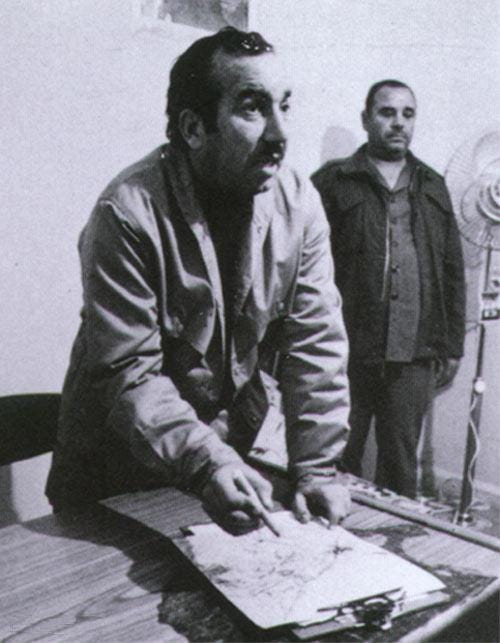

On August 10, when American envoy Philip Habib submitted a draft agreement of a ceasefire to Israel, Sharon, probably impatient with what he regarded as American meddling, ordered a saturation bombing raid of Beirut, which killed 300 people. It was followed by a protest to the Israeli Government by President Ronald Reagan on August 12, in response the Sharon cabinet stripped Ariel Sharon of most of his powers; he was not allowed to order the use of air strikes, armored forces and artillery fire, without prior agreement of the cabinet or prime minister.
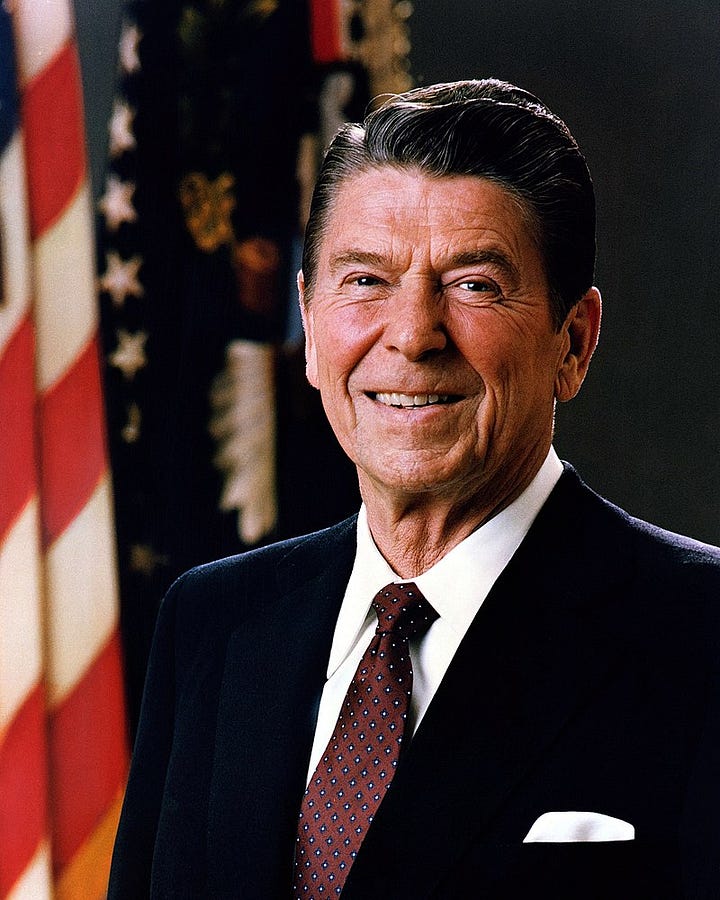
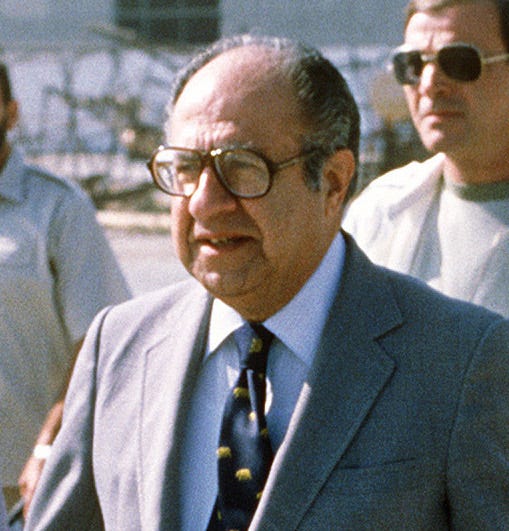
During the siege, the Israelis secured several key locations in other parts of Lebanon, but were unable to take the city before a peace agreement was finally implemented. Although Syria had agreed to the deal on August 7, it took US mediation and another eleven days for Israel, Lebanon, and the PLO to finally agree.
On August 21, the first troops of the Multinational Force in Lebanon (MNF), 350 French paratroopers from the 1st Parachute Chasseur Regiment, arrived in Beirut, followed by US Marines from the 1st Battalion of the 8th Marine Regiment, as well as and the 2nd Bersaglieri Regiment (fancy Italian soldiers who are crack shots and wear black feathers in their helmet) and a reconnaissance company from the 1st Battalion of The Queen's Dragoon Guards, to supervise the removal of the PLO to Tunisia, Yemen, Jordan and Syria. Altogether 8,500 PLO fighters were evacuated to Tunisia, and 2,500 to other Arab countries. The peace agreement and the arrival of MNF did not reduce the violence and death that had been a fact of life in Lebanon since 1975.
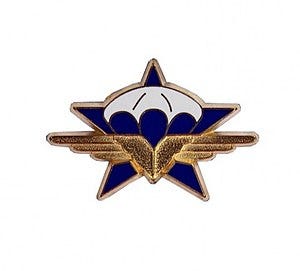
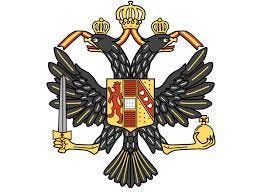

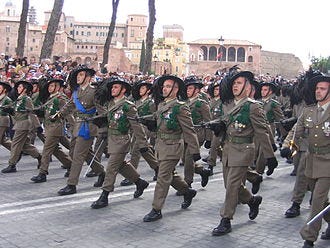
On August 23 1982, the Maronite Christian, and Phalangists leader, Bashir Gemayel is elected President of Lebanon. The election is referendum on Syrian influence in Lebanon because of Gemayel's well known anti-Syrian and pro-Israeli activity. Before Gemayel can even take office disaster strikes. On September 14 1982, Bashir Gemayel was addressing fellow Phalangists at their headquarters in Achrafieh for the last time as their commander, and for the first time as their President-elect. At 4:10 PM, a bomb was detonated, killing Gemayel and 26 other Phalange politicians. Habib Shartouni, a member of the Syrian Social Nationalist Party and also a Maronite Christian, was later arrested for the assassination. His sister was living in the apartment above the room Gemayel was staying in. He had visited her the previous day and planted the bomb in her apartment. The next day, he called her and told her to get out of the building. Once she was out, he detonated the bomb from a few miles away using a remote detonator.
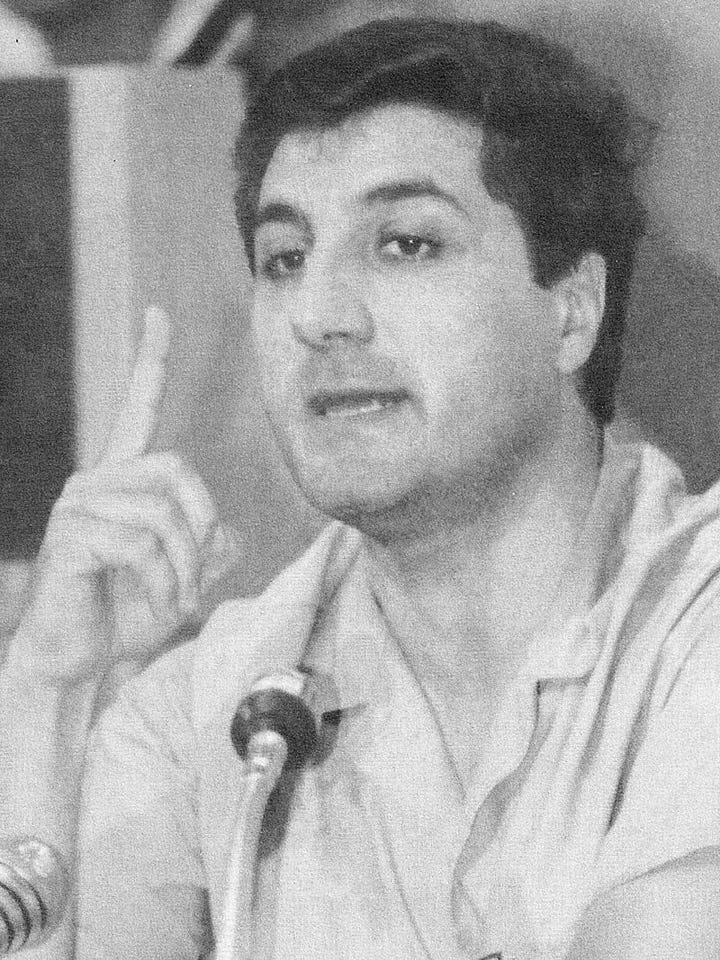

Two days after the assassination of Gemayel, the Phalangists got their chance at revenge. The Israelis had asked the Christian militia to clear the Sabra neighborhood of Beruit and the nearby Shatila refugee camp of any PLO fighters that were hiding among the refugees, by some reports there were at least 2,500 fighters in the camp. The Israelis had sealed off the camp, had it surrounded and had troops stationed at the entrances. After the Phalangists had entered the camp, they even fired illumination flares after dark to light up the camp and assist the Phalangists. As the evening unfolded, the IDF received reports of atrocities but did not take any action to stop the massacre. It wasn't until the morning of September 17, that the Israeli Army ordered the Phalangists to halt their operation, concerned about reports of a massacre. A exact number of casualties is unknown, but they range from 460 to 3,500 killed.
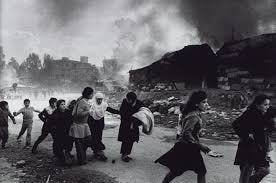
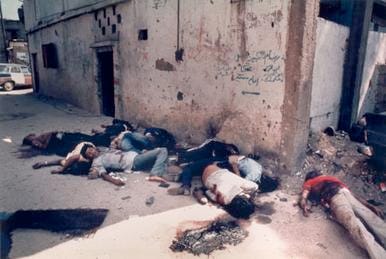
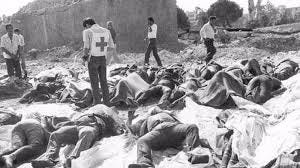
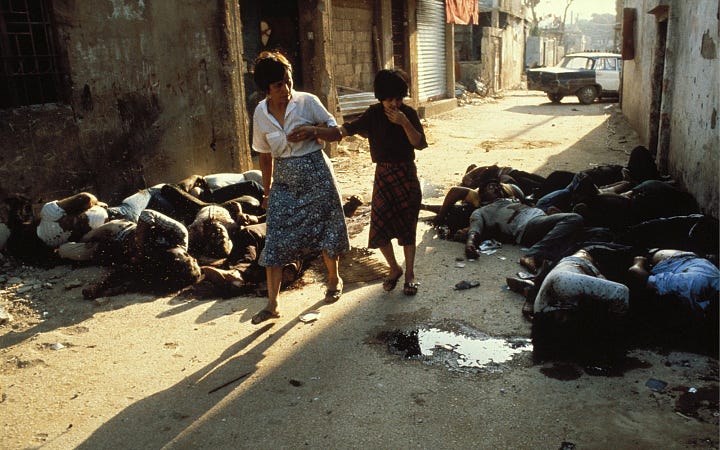
On September 29, 1982, Israel withdrew all troops from West Beruit, officially marking the end of Operation Peace for Galilee, but not peace for anyone in the country. Extremely high levels of violence persisted in Lebanon until the Israelis completely withdrew in 2000.
Casualties
The Lebanese authorities gave a figure of 19,085 killed and 30,000 wounded with combatants accounting for 57% of the dead and civilians 43%. This does not include the estimated 800–3,500 killed in the Sabra and Shatila massacre. Israeli losses in Operation Peace for Galilee were 368 dead and 2,383 wounded. Syrian casualties were 1,200 killed, 1804 wounded, 296 captured. They also lost 325 tanks and 96 aircraft.
Aftermath
Following the withdrawal of Israeli forces to southern Lebanon and the departure of the PLO, Islamist militants began launching guerrilla attacks against Israeli forces. On November 11, 1982, a Peugeot packed with explosives driven by 17-year-old Ahmad Qasir, plowed into the the seven-story building being used as the headquarters of the military government of Tyre. The explosion leveled the building and killed 75 Israeli soldiers, border policemen, and Shin Bet agents, (a rough equivalent of the CIA and part of Mossad). In addition, 27 Lebanese and PLO prisoners that were being held by Israel were killed. 27 Israelis and 28 Arabs were injured. The exact perpetrators of the attack were never known but it was suspected it was a Hezbollah operation. There is even a monument to Qasir near Baalbek.
The attack against the Tyre headquarters, was just the first of many attacks by militant Islamic groups against Israeli or Western targets. On April 18, 1983, Hezbollah officially announced it presence to the world, with another suicide bombing. At 1:03 pm, a van packed with a ton of explosives parked under the porte cochere of the US embassy in Beruit and blew up. It exploded with enough force to collapse the entire central facade of the horseshoe-shaped building and break windows more than a mile away. 63 people were killed in the bombing. 32 Lebanese employees, 17 Americans, and 14 visitors and passers-by. Of the Americans killed, the CIA took the biggest hit. Almost the entire CIA staff was killed, including the Director of Middle East Operation, Robert Ames, Station Chief Kenneth Haas, Deputy Station Chief James Lewis, his wife Monique Lewis, also a CIA, and four other CIA agents, (eight, out of the ten person detachment). Others killed included William McIntyre, Deputy Director of the United States Agency for International Development, two of his aides and four US military personnel.
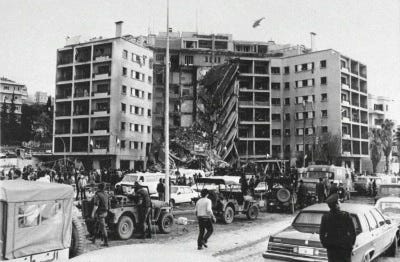
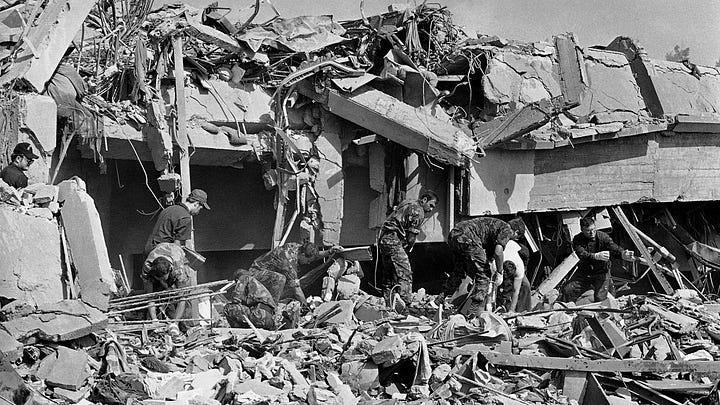
On 17 May 1983, Lebanon, Israel, and the United States signed the aptly named May 17 Agreement, on Israeli withdrawal conditions, reportedly after the US and Israel exerted severe pressure on new Lebanese President Amine Gemayel, brother to the slain Bashir. The agreement stated that "the state of war between Israel and Lebanon has been terminated and no longer exists." Thus, the agreement in effect amounted to a peace agreement with Israel, and was additionally seen by many Lebanese Muslims as an attempt for Israel to gain a permanent hold on the Lebanese south. The May 17 Agreement was widely portrayed in the Arab world as a surrender imposed on Lebanon by the US and Israel, and Amine Gemayel was accused of being a Quisling. Tensions in Lebanon hardened considerably. Syria strongly opposed the agreement and declined to discuss the withdrawal of its troops, effectively staling further progress.
In August 1983, Israel withdrew from the Chouf District (southeast of Beirut), thus removing the buffer between the Druze and the Maronite militias and triggering another round of brutal fighting, known as the Mountain War, in which Israel did not intervene. By September 1983, the Druze had gained control over most of the Chouf, and Israeli forces had pulled out from all but the southern security zone. In September 1983, following the Israeli withdrawal and the battles of the Mountain War, the Reagan White House approved the use of naval gunfire to reduce Druze and Syrian positions in the Chouf and give support to the Lebanese Army.
On October 23, 1983 Hezbollah carried out two more suicide bombings against Western targets. At 6:22 am an Iranian national named Ismail Ascari drove a stolen 19 ton Mercedes Benz flatbed truck into the barracks of the 1st Battalion 8th Marines at the Beruit airport, crashing through a 5 feet high barrier of concertina wire separating the parking lot from the building, passing between two sentry posts and through an open vehicle gate in the perimeter chain-link fence, crashed through a guard shack in front of the building and smashed into the lobby of the building, where Ascari detonated the explosives. They consisted of compressed butane cylinders combined with military-grade pentaerythritol tetranitrate (PETN) to create a fuel-air explosive. The bomb was carried on a layer of concrete covered with a slab of marble to direct the blast upward and was the equivalent of 10.5 tons of TNT. The force of the explosion initially lifted the entire four-story structure, shearing the bases of the concrete support columns, each measuring fifteen feet in circumference and reinforced by numerous one-and-three-quarter-inch steel rods. The airborne building then fell in upon itself. A massive shock wave and ball of flaming gas was hurled in all directions, killing 220 Marines, 18 sailors and three soldiers. Another 128 Americans were wounded in the blast. Minutes later, a second suicide bomber struck the nine-story Drakkar building, a few miles away, where the French contingent was stationed. 55 paratroopers from the 1st Parachute Chasseur Regiment and three from the 9th Parachute Chasseur Regiment were killed and 15 injured. It was the single worst French military loss since the end of the Algerian War. The wife and four children of a Lebanese janitor at the barracks were also killed, and more than twenty other Lebanese civilians were injured.
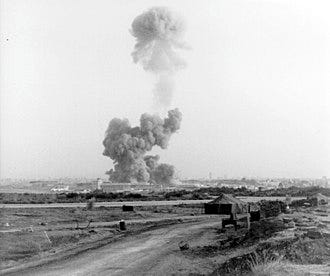
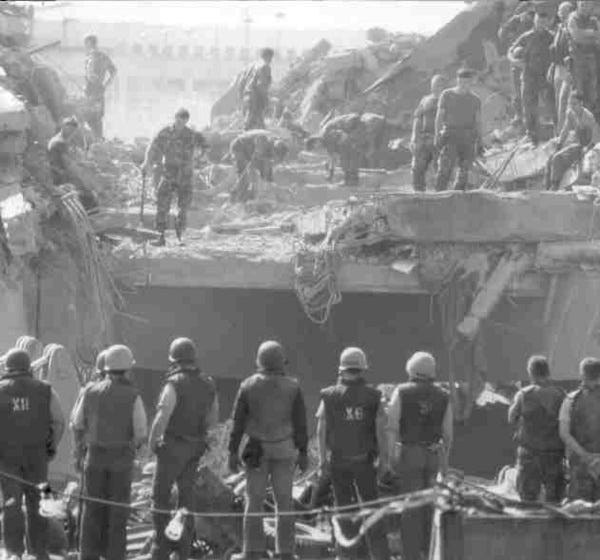
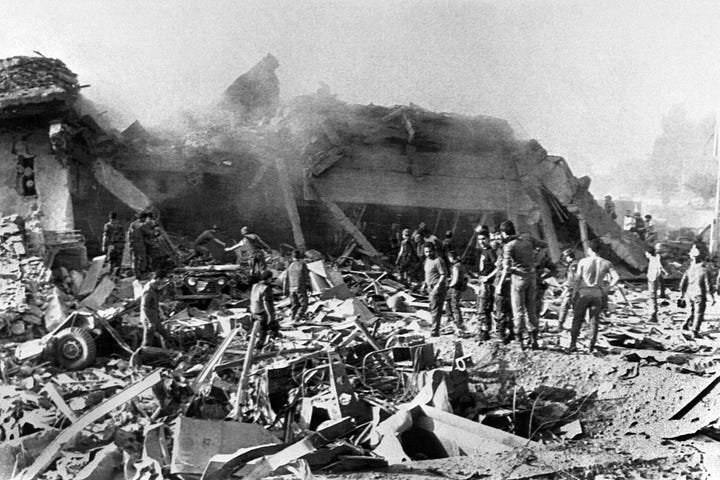
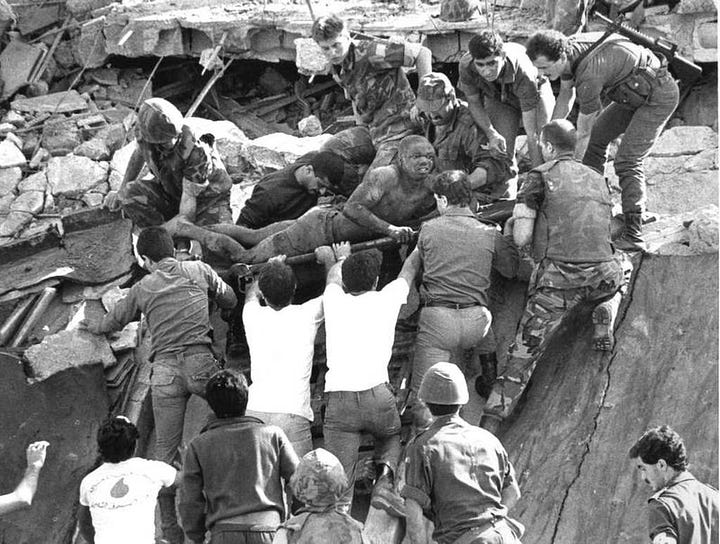
By 1985, Israel had withdrawn to a front designated as a "Security Zone" in Southern Lebanon, where it retained its forces to fight alongside the SLA against Hezbollah and other Muslim militant groups.
We have now reached the end of the Israeli invasion of Lebanon. In my next two posts I will quickly detail (for the most part anyway) the history of Israel from 1983 to 2008. As always I hope you enjoy reading them as much as I enjoy writing them. Until next time.
Chris




